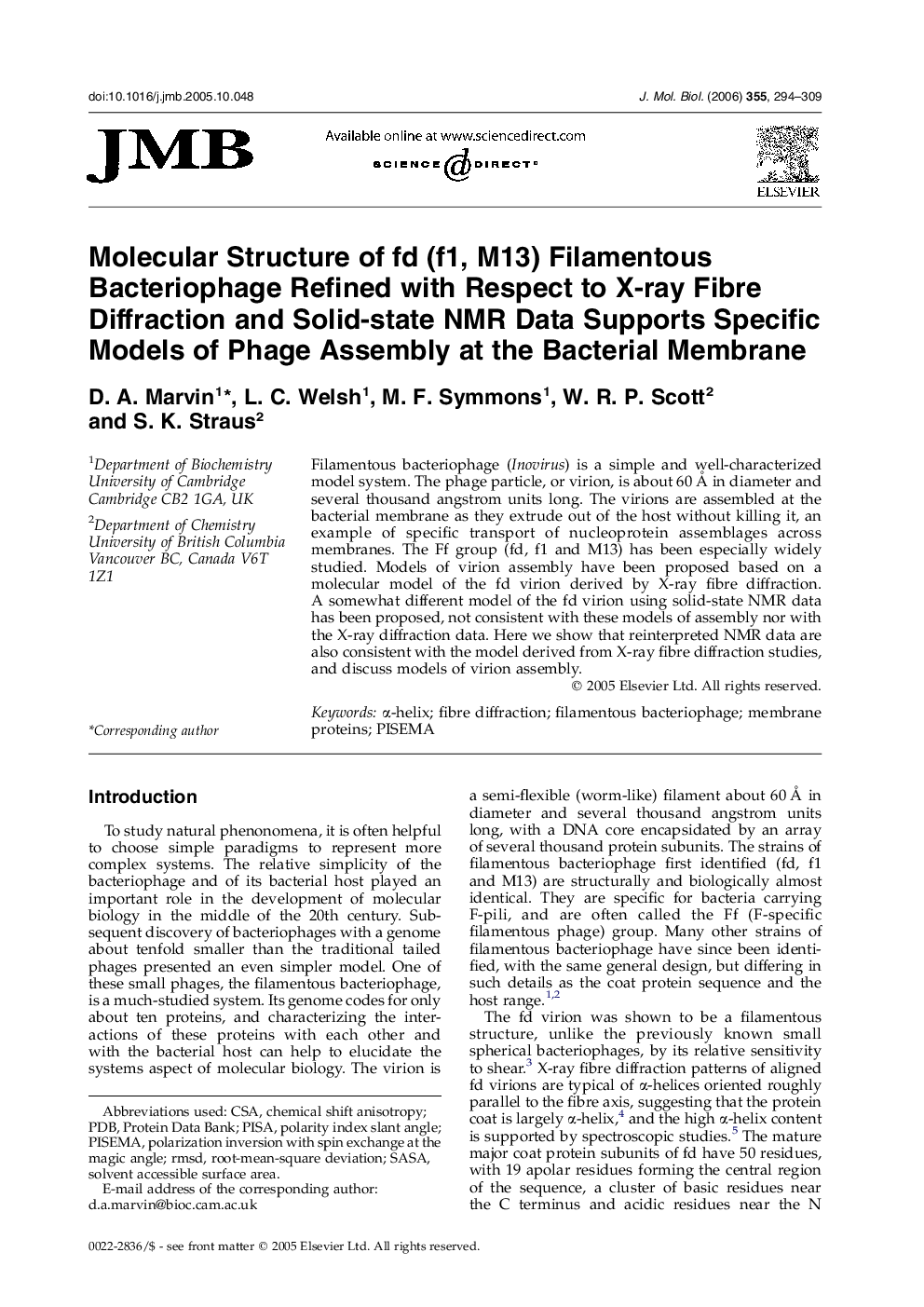| Article ID | Journal | Published Year | Pages | File Type |
|---|---|---|---|---|
| 2189775 | Journal of Molecular Biology | 2006 | 16 Pages |
Filamentous bacteriophage (Inovirus) is a simple and well-characterized model system. The phage particle, or virion, is about 60 Å in diameter and several thousand angstrom units long. The virions are assembled at the bacterial membrane as they extrude out of the host without killing it, an example of specific transport of nucleoprotein assemblages across membranes. The Ff group (fd, f1 and M13) has been especially widely studied. Models of virion assembly have been proposed based on a molecular model of the fd virion derived by X-ray fibre diffraction. A somewhat different model of the fd virion using solid-state NMR data has been proposed, not consistent with these models of assembly nor with the X-ray diffraction data. Here we show that reinterpreted NMR data are also consistent with the model derived from X-ray fibre diffraction studies, and discuss models of virion assembly.
